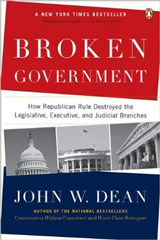Editor’s Note: This is the second in an ongoing series of columns in which the author addresses this subject.
To my surprise, many people who have been bullied or harassed on Twitter are unfamiliar with the tools Twitter provides to deal with this problem, which offer at least some minimal protection. These tools are explained in Twitter’s “Terms of Service” agreement. While this material may be less than scintillating reading, it does make clear that Twitter finds that bullying and abusive behavior are unacceptable. Using these tools is an essential first step in dealing with abusive behavior on Twitter.
Bullying and abusive behavior often arise from family, neighborhood, educational, and employment relationships and disputes, which then spill over onto social media such as Twitter. In those situations, a victim of abuse typically knows the bully’s or abuser’s identity. Those situations are not my main concern, although what I have learned may be useful in such situations.
By limiting my examination to cyberbullying arising because of the use of Twitter, I am not suggesting that Twitter has become a haven for bullies and abusive users. In fact, that is not the situation. Rather, I believe it may be helpful to know how to prevent a few cowardly and bullying browbeaters and ranters from ruining an otherwise pleasant and delightful online neighborhood.
Twitter Is a Friendly Place
As Time magazine discovered, it is not clear exactly how many people actually use Twitter. It appears that there are somewhere between 200 million to 350 million Twitter accounts, although not all are active. Recent polling indicates that some 8 percent of Americans actively use Twitter. (By comparison, 51 percent use Facebook.) Extrapolating from this data, there are probably between 20 to 25 million Americans who are active on Twitter. (When Twitter goes public, as it inevitably will, we will get more accurate numbers.)
Whatever the number, there are a lot of people on Twitter, and they represent a strikingly diverse cross-section of the American population, which is one of Twitter’s attractions. Based on my experience, Twitter users are overwhelmingly thoughtful and pleasant, and they treat others on Twitter as they no doubt themselves wish to be treated, respectfully and courteously. With political topics, which are my principal interest, of course there are endless cheap shots tossed at politicians, political parties, and radical proposals by both the left and right, but that is as it has always been and is simply part of political debate and discussion.
The troubling behavior that should concern everyone on Twitter is not, of course, such political debate or discussion. Rather, it is the repeated or outsized ad hominem attacks that are made against other Twitter users. I am not talking about a passing reference that is made during an argument or discussion, but rather calculated efforts to hurt, embarrass, falsely discredit or defame a person because of his or her beliefs or tweets. It may be an effort to intimidate and silence the target, or it may be simple revenge for something the target said, or even jealousy toward those who are popular or prominent on Twitter.
Bullies, I’ve noticed, tend especially to go after people on Twitter who have tried to support others whom they have seen being bullied, by calling out the bullying. Whatever the reason, there is no justification to bully or abuse anyone for anything that is said on Twitter, not even if the intention is to dish out more of the same to a bully or abuser. If people want to fight, they must go to another venue, where they can have at it. Twitter prohibits bullying! And if one wants to use the service, one should play by the rules.
Twitter Expressly Prohibits Bullying
Twitter’s “Terms of Service” (TOS) agreement warns that exchanges can become unpleasant, or worse, because Twitter wants to stay out of these problems. Accordingly, the TOS states: “You understand that by using [Twitter], you may be exposed to Content that might be offensive, harmful, inaccurate or otherwise inappropriate, or in some cases, postings that have been mislabeled or are otherwise deceptive.” Twitter is not saying, however, that you agree to being bullied. To the contrary, Twitter expressly forbids bullying and related conduct that is often employed by bullies. Also, Twitter offers suggestions on how to deal with bullying.
To be specific, “The Twitter Rules” prohibit others from impersonating you; publishing your “private and confidential information, such as credit card numbers, street address or Social Security/National Identity numbers” without express approval; or posting “direct, specific threats of violence against” you—all tactics that have been employed by bullies and abusive users to harass, annoy and damage targets.
The rules also state that “Twitter strives to protect its users from . . . abuse. Technical abuse and user abuse is not tolerated . . . and will result in permanent suspension.” The meaning of “technical abuse” is spelled out, while the meaning of “user abuse” is rather vague, but could arguably be said to fall within the standards that are set forth in sections of the TOS material addressing “Safety: Abusive Users” (explained below) and labeled “Following Rules and Best Practices,” where the Twitter powers that be state clearly that they do not want the site to become “a less-nice place to hang out.”
When discussing “Safety: Abusive Users,” Twitter rhetorically asks: “What can you do?” Their response is in bold letters: “Don’t be a bully.” More specifically, the material explains, “You may encounter people on Twitter who you don’t like or who say things that you disagree with or find offensive. Please remain courteous, even if the other people are not. Retaliation can reinforce bad behavior and only encourages bullies. Don’t forward or reTweet bullying or mean messages. Remember that the things you say can be very hurtful to other people, even if you think it’s a joke. Don’t turn into a bully yourself.”
Twitter also instructs users on how to deal with bullies or people whom you would rather not have bothering you, or following your activities, providing advice and recommendations.
Twitter’s Recommendations for Dealing With Bullies: Block & Ignore
“If you are receiving unwanted communications from a bully,” or for that matter anyone who contacts you via Twitter and with whom you do not wish to associate, Twitter recommends “that you block the user and end any communication. Ending communication with bullies [and others] shows them that you are not willing to engage with them, and often they lose interest. It also demonstrates to others that you are not involved in similar behavior and that you are acting against bullying.”
Twitter explains that blocking prevents a person “from following you or replying to you, and can minimize any incentives [for the bully] to persist in their conduct,” and Twitter provides a help page on blocking which instructs users as to how to block other users. Twitter acknowledges “that bullying is a serious issue” and claims that this is the reason that it has “provided all users with the ability to block other users.” There is, however, a problem with Twitter’s solution to bullying: It does not stop the anonymous or pseudonymous bully from continuing attacks against his or her target via Twitter.
While you can, for example, block @iamabully (to use a fictional Twitter name) from following you, as Twitter notes in its FAQ, that will not prevent this person from creating a new account with which to follow and harass you. Nor does blocking a user such as @iamabully from sending you messages by having someone whom you do not block retweet a mention of you, which will then appear in the “Mentions” section of your Twitter account. Indeed, I understand that these are standard ploys and tactics by Twitter bullies and abusers who seek to continue to harass their target(s), even after they have been blocked.
Protected Twitter Accounts and Reporting Abusers
In addition, there is another tool that is available to shield your account: A protected account. But using such an account greatly restricts your ability to serendipitously encounter or discover other users with similar interests on Twitter. And that is a significant sacrifice, as Twitter followers tend to follow others with like interests and beliefs. A protected account, however, restricts followers to only those you approve.
To create a protected account on Twitter, you must alter the setting for your account, where you are given the option of choosing a “Public” or a “Protected” account. If you check “Protected,” then anyone who wishes to follow you will have to request your consent to do so; your tweets can only be viewed by your approved followers, who cannot retweet you; and your protected tweets will not appear in a Twitter search. You have, in effect, created a private and closed network of followers.
But even in this protected (and restricting) status, the clever bully can continue to harass, for even with a protected account you will still receive “Mentions” when @YourTwitterName is included by others. It takes very little effort by the bully to enlist others to pass on such material, for sadly, there are Twitter users who encourage bullying. Such users may even support bullies by retweeting and encouraging them, even when they don’t directly bully themselves. (These facilitators may not understand that should their bully engage in criminal conduct, they too could become criminally liable, as coconspirators. Or, if the bully is named in a civil lawsuit, they could be named as well.)
Twitter makes clear in the TOS agreement that to use its platform and services, you must accept all their terms, and those terms make clear that Twitter itself does not want to get involved in disputes between account users. Nonetheless, Twitter does provide a means to report abusive behavior by submitting a Support ticket, where you can report such misconduct as the posting of your private information, the stealing of your Tweets, the posting of offensive content, the sending to you of abusive messages or the making of violent threats. (They also have advisory material for law enforcement, should you need to call the police to protect yourself.)
Reporting the situation to Twitter may succeed in getting our hypothetical bullying user @iamabully suspended from Twitter, but if @iamabully is hell bent on harassing you, he or she will open another Twitter account, and may return to harass you with new vigor, or do so via Mentions. Frankly, I do not believe that anyone should expect Twitter to resolve his or her problem with a bully. If law enforcement becomes involved, Twitter will be responsive to them. But with potentially millions of disputes between its users, Twitter cannot practicably become involved in most situations of bullying or other abusive behavior.
As a general rule, Twitter will NOT tell you what they know about a person who is bullying or harassing you. This information is protected by Twitter’s Privacy Policy. Indeed, many bullies turn on their targets, and claim that they are actually the victims. As I mentioned in Part One, bullies are very clever and good at pointing the figure at others to escape responsibility.
Twitter account privacy is not, however, ironclad. Twitter users agree, under the TOS, that there are circumstances under which Twitter can release to others what it knows about you, under the following rather vague clause: “Law and Harm: We may preserve or disclose your information if we believe that it is reasonably necessary to comply with a law, regulation or legal request; to protect the safety of any person; to address fraud, security or technical issues; or to protect Twitter’s rights or property.”
(In a subsequent column, I will explain past circumstances where Twitter has indeed provided information under this clause, and I will suggest situations in which Twitter may be willing to provide such information in order to help a user deal with bullies and abusers. In addition, I will explain techniques that I have learned that are used by private investigators to flush out the true identity of Twitter bullies and abusers.)
Suffice it to say, as Twitter sees it, its willingness to assist is necessarily limited. Thus, users may need to look to other alternatives.
If You Are Bullied on Twitter, Keep a Record of the Bullying and of Your Use of Twitter’s Remedies
By and large, those who use Twitter are polite and thoughtful. Many are extremely well-informed, engaging and even entertaining people. Still, I have had my share of trolls show up, but I simply block them, as Twitter suggests, at the first sign of unduly aggressive or nasty behavior. Occasionally, when something attracts my attention, I pause to check those who are following me by looking at their followers, or the tone and nature of their tweeting, and if I do not like what I find, I do not hesitate to block them, even through they have never addressed me. In addition, I follow only people and organizations when (1) they have revealed their true identity; or (2) I know their true identity notwithstanding their use of a pseudonymous nom de Twitter. So far, this has worked well for me.
If you feel you are being bullied on Twitter, please do use Twitter’s recommended remedies. The actions described there will establish the bully’s determination to target you. When you are doing so, most importantly, KEEP DETAILED RECORDS, of both the bully’s activities and your efforts to deal with the problem. In addition, share this situation with one or more close and trusted friends via email, where you explain what you are dealing with and how it may be affecting your life. Save those emails, for you are gathering witnesses and making a record. Sharing this information also provides relief, helping to keep you grounded and able to put the situation in perspective. If you do not have screen-capture software, get it. There are countless shareware products that enable you take a picture of the screen, and record bully attacks, which you should date, label and file. Also you can keep copies of the URL of the abusive post; these pages might be removed, but once you have a screen capture, you have a record. These records can be vital to build a case against a bully or abuser, and are very easy to assemble.
Because Twitter’s recommendations and remedies are woefully incomplete for dealing with someone who is hell-bent on being a bully or a persistently and insistently overly aggressive pest, you will likely have to go outside Twitter to resolve the problem. Increasing numbers of attorneys and private investigators are dealing with cyberbullying, and learning how to effectively deal with this anti-social behavior.
Needless to say, circumstances dictate the way cyberbullying can or should be addressed: Whether it calls for an attorney, a private investigator, a criminal complaint, and/or a civil action (and what kind of action), depends on the nature and egregiousness of the behavior and on other circumstances.
I’ve learned much from my inquiry, which is continuing. Bullying, and the question how to deal with a bully, raise interesting First Amendment and other legal issues. My inquiry and reporting will be ongoing (if not protracted). I have been very disappointed with the publicly-available information on this topic, so I plan to intermittently report more on what I have learned, as I also continue to do my normal political and legal potpourri of columns on other subjects. But I do plan to explore cyberbullying on Twitter fully, and that will take time.
Again, if you have information that you would like to share on this topic, please do. As far as I am concerned, it is off the record, and merely for my edification: jwd.re.cyberbullying@gmail.com.















At least Facebook and Twitter have some measures in place to prevent bullying and actually seem to have some concern and require users to sign up before posting. Even Formspring is starting to do more, too bad websites like Topix can’t do even the smallest of things like make people register with a valid email address. Great article.
Twitter’s block and ignore advice is fine when there isn’t an outright attempt to bully someone. Block someone and lo and behold a new account saying almost exactly the same thing is born again. Twitter suggests that the complaint be taken to “local authorities”. Which is good advice when you’ve been threatened with bodily harm. However, have you ever tried to get a police officer to listen when it’s online harrassment that is mostly just annoying? The fact that over time it takes it’s toll on a person’s emotions isn’t all that important to local authorities.
When you have a judge stating that things said on Twitter aren’t bullying, it tends to make Twitter’s TOS not worth the screen it’s printed on. Block and ignore is only going to work when the person on the receiving end has no desire for revenge. Would be nice if it did work.
DEAR MR. DEAN WHEN THE JUSTICE FAILS AND IS FILLED WTH CORRUPTION WHT IS THE ANSWER GOOGLE MY NME AND STAR HARRIS VS 7ELEVEN 8YR FGHT, IN APPEALS CRT NW REP AFTER 8YRS. WHY AND HW IS THE LARGESR RETAILER OF ALCOHOL/TOBACCO ABLE TO GET AWAY WTHTHE NEGLIGENCE SEEN IN THE VIDEO AND OUR INCARCERATIONS AND BEATINGS HVE BEEN HIDDEN FOR 8 YRS. IT’S A DISGRACE BEFORE GOD/MANKIND STAR HON VET/MENSA/BS COMP ENGIN/NONORS PHYSICS 3X BUS OWNER/NT CONVICTED FELON/WS LAW STUDENT BEFORE BRUTAL ATTACK. I CAN’T LIVE THIS WAY AND SHALL FIGHT UNTIL MY DEMISE. I DNT WNT 2 SAY MY NEW ATT NME. HE’S HUMBLE, JUST, AND HS BEEN AROUND FOR ALMOST A CENTURY FIGHTING FOR JUSTICE. I’M VERY ILL WTH 43 OPERATIONSIF YOU CAN HELP CL ME FOR NOW BECAUSE OF THS THE STATE IS TRYING TO HURT ME WITH CASES ONE ALREADY DISMISSED WTH 1 PENDING. ADVOCATING IS NOT A CAKEWALK I WENT INTO THIS HATE CRIME CAUSE, VERY NAIVE, WELL, NOT ANYMORE. MY DAUGHTER IS SO HURT, I WISH I CLD HVE HER BACK THE WAY SHE WAS BEFORE HER EYEBONE /RIBS FRACTURED WTH A CLOSED HEAD CONCUSSION… NO POLICE ANSWERED THE 911 CALL OH GOD HELP …….THE PUBLIC HS A RIGHT TO KNOW……
My child is being being bullied by a group of girls from her middle school. The girls are relentless and nothing seems to stop them. We have tried blocking them they find other ways to get to her. We have hired a attorney and made many compaints to the police they seem to file a incident report and thats it nothing happens! I have went to her school again nothing happens. I have been to court again nothing happens. I don’t know how many children have to die because of bullying for everyone to take this very serious. Bullying is a very very serious problem that people just don’t take seriously and it’s sad. My daughter has had all her gadgets taken because other kids(bullies) cannot control themselves. My daughter feels as if she is being punished because other child and parents believe its ok to torment other kids and that the kids will just get over it!!! Sad but all true!!!!